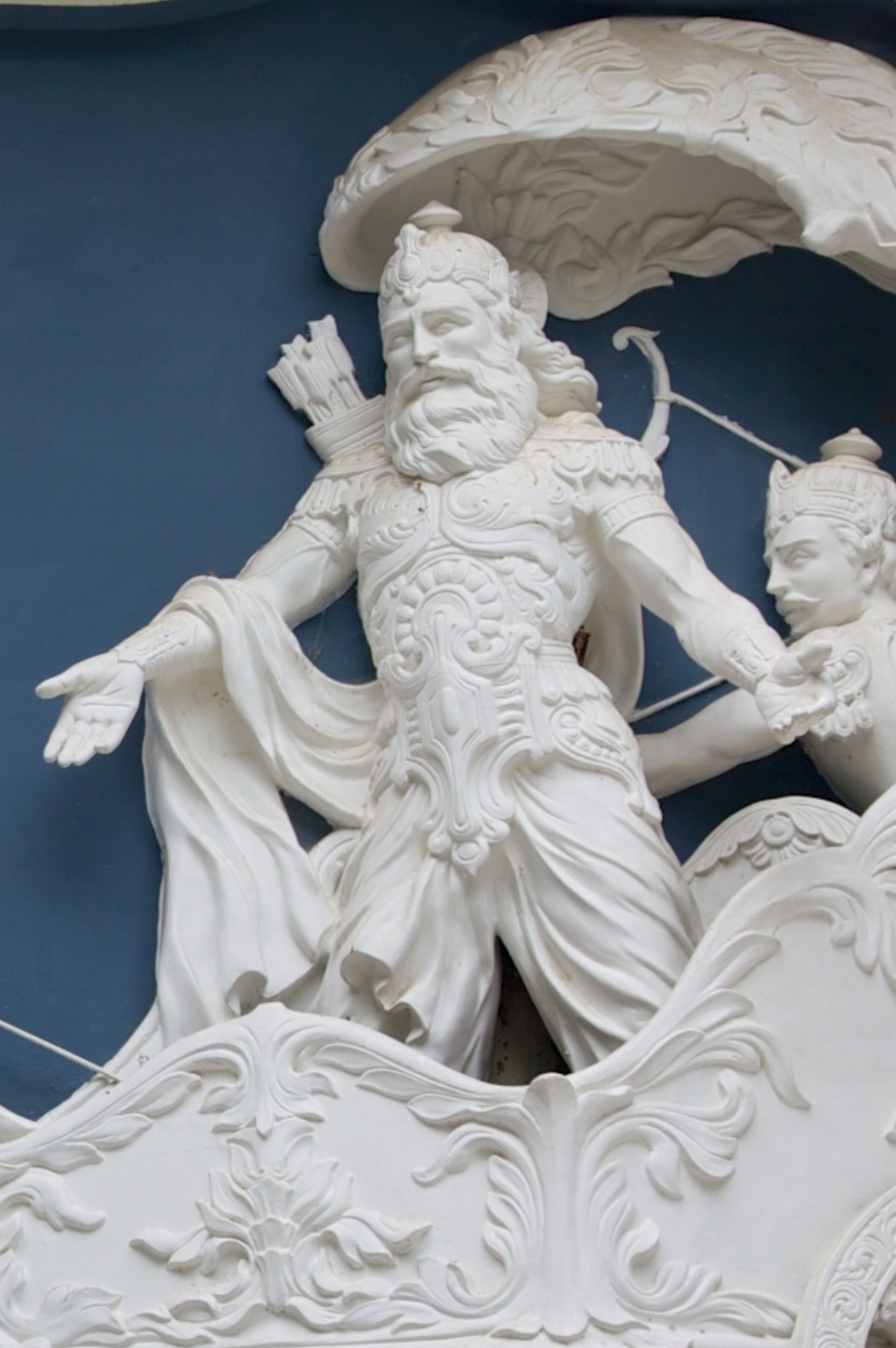|
Buddha (manga)
is a manga drawn by Osamu Tezuka and is Tezuka's unique interpretation of the life of Gautama Buddha, the founder of Buddhism. The critically acclaimed series is often referred to as a visually explicit yet humorous and thought-provoking portrayal of the Buddha's life; the series itself has become a staple text in Buddhist temples for young adults and teens to learn about the Buddha's life. The series began in September 1972 and ended in December 1983, as one of Tezuka's last epic manga works. ''Buddha'' has over 20 million copies in circulation and won Eisner Awards in 2004 and 2005. Due to differences between the ways in which Japanese and English are read, the American volumes published by Vertical Inc. are presented as mirror images of Tezuka's original work so they can be read from left to right, rather than from right to left. Nearly three decades after the manga was completed, an anime film adaptation was released in 2011. A second film was released in 2014. Pl ... [...More Info...] [...Related Items...] OR: [Wikipedia] [Google] [Baidu] |
Historical Fiction
Historical fiction is a literary genre in which a fictional plot takes place in the Setting (narrative), setting of particular real past events, historical events. Although the term is commonly used as a synonym for historical fiction literature, it can also be applied to other types of narrative, including theatre, opera, Film, cinema, and television, as well as video games and graphic novels. An essential element of historical fiction is that it is set in the past and pays attention to the manners, social conditions and other details of the depicted period. Authors also frequently choose to explore notable historical figures in these settings, allowing readers to better understand how these individuals might have responded to their environments. The historical romance usually seeks to romanticize eras of the past. Some subgenres such as alternate history and historical fantasy insert intentionally ahistorical or Speculative fiction, speculative elements into a novel. Works of ... [...More Info...] [...Related Items...] OR: [Wikipedia] [Google] [Baidu] |
History Of India
Anatomically modern humans first arrived on the Indian subcontinent between 73,000 and 55,000 years ago. The earliest known human remains in South Asia date to 30,000 years ago. Sedentism, Sedentariness began in South Asia around 7000 BCE; by 4500 BCE, settled life had spread, and gradually evolved into the Indus Valley Civilisation, one of three early Cradle of civilization, cradles of civilisation in the Old World, which flourished between 2500 BCE and 1900 BCE in present-day Pakistan and north-western India. Early in the second millennium BCE, 4.2 kiloyear event, persistent drought caused the population of the Indus Valley to scatter from large urban centres to villages. Rigvedic tribes, Indo-Aryan tribes moved into the Punjab from Central Asia in several Indo-Aryan migration theory, waves of migration. The Vedic Period of the Vedic people in northern India (1500–500 BCE) was marked by the composition of their extensive collections of hymns (Vedas). The social structure ... [...More Info...] [...Related Items...] OR: [Wikipedia] [Google] [Baidu] |
Ajatashatru
Ajatasattu (Pāli: ) or Ajatashatru (Sanskrit: ) in the Buddhist tradition, or Kunika () and Kuniya () in the Jain tradition (reigned c. 492 to 460 BCE, or c. 405 to 373 BCE), was one of the most important kings of the Haryanka dynasty of Magadha in East India. He was the son of King Bimbisara and was a contemporary of both Mahavira and Gautama Buddha. He forcefully took over the kingdom of Magadha from his father and imprisoned him. He fought a war against the Vajjika League, led by the Licchavis, and conquered the republic of Vaishali. The city of Pataliputra was formed by fortification of a village by Ajatashatru. Ajatashatru followed policies of conquest and expansion. He defeated his neighbouring rivals including the king of Kosala; his brothers, at odds with him, went to Kashi, which had been given to Bimbisara as dowry and led to a war between Magadha and Kosala. Ajatashatru occupied Kashi and captured the smaller kingdoms. Magadha under Ajatashatru became the mos ... [...More Info...] [...Related Items...] OR: [Wikipedia] [Google] [Baidu] |
Magadha (Mahajanapada)
Magadha was a region and kingdom in ancient India, based in the eastern Ganges Plain. It was one of the sixteen Mahajanapadas during the Second Urbanization period. The region was ruled by several dynasties, which overshadowed, conquered, and incorporated the other Mahajanapadas. Magadha played an important role in the development of Jainism and Buddhism and formed the core of the Maurya Empire (ca. 320–185 BCE). Geography The territory of the Magadha kingdom proper before its expansion was bounded to the north, west, and east respectively by the Gaṅgā, Son, and Campā rivers, and the eastern spurs of the Vindhya mountains formed its southern border. The territory of the initial Magadha kingdom thus corresponded to the modern-day Patna and Gaya districts of the Indian state of Bihar. The region of Greater Magadha also included neighbouring regions in the eastern Gangetic plains and had a distinct culture and belief. History Vedic period (semi-legendary) (ca. 170 ... [...More Info...] [...Related Items...] OR: [Wikipedia] [Google] [Baidu] |
Bimbisara
Bimbisāra (in Buddhist tradition) or Shrenika () and Seniya () in the Jain histories ( or ) was the King of Magadha (V. K. Agnihotri (ed.), ''Indian History''. Allied Publishers, New Delhi 262010p. 166f. or ) and belonged to the Haryanka dynasty.Peter N. Stearns (2001), ''The Encyclopedia of World History''. Houghton Mifflin, p. 76 ff. . He was the son of Bhattiya. His expansion of the kingdom, especially his annexation of the kingdom of Anga to the east, is considered to have laid the foundations for the later expansion of the Mauryan Empire. According to Jain Tradition, he is said to be the first Tirthankara (''will be named as Padmanabha / Mahapadma'') out of 24th Tirthankara of the future cosmic age. He frequently visited Samavasarana of Lord Mahavira seeking answers to his queries. According to Buddhist Tradition, he is also known for his cultural achievements and was a great friend and protector of the Buddha. According to the 7th century Chinese monk Xuanzang, Bim ... [...More Info...] [...Related Items...] OR: [Wikipedia] [Google] [Baidu] |
Kapilavastu (ancient City)
Kapilavastu was an ancient city in the eastern Gangetic plains of the Indian subcontinent which was the capital of the clan ''gaṇasaṅgha'' or "republic" of the Shakyas in the late Iron Age, around the 6th and 5th centuries BC. King Śuddhodana and Queen Māyā are believed to have lived at Kapilavastu, as did their son Prince Siddartha Gautama (Gautama Buddha) until he left the palace at the age of 29. Buddhist texts such as the Pāli Canon say that Kapilavastu was the childhood home of Gautama Buddha, on account of it being the capital of the Shakyas, over whom his father ruled. Kapilavastu is the place where Siddhartha Gautama spent the first 29 years of his life. According to Buddhist sources the name Kapilvatthu means "tawny area", due to the abundance of reddish sand in the area. Most foreign accounts from the medieval period, particularly from China, described Kapilavastu as being part of "Central India". Kapilavastu never became a major pilgrimage site like Buddh ... [...More Info...] [...Related Items...] OR: [Wikipedia] [Google] [Baidu] |
Kosala
Kosala, sometimes referred to as Uttara Kosala () was one of the Mahajanapadas of ancient India. It emerged as a small state during the Late Vedic period and became (along with Magadha) one of the earliest states to transition from a lineage-based society to a monarchy. By the 6th century BCE, it had consolidated into one of the four great powers of ancient northern India, along with Magadha, Vatsa, and Avanti. Kosala belonged to the Northern Black Polished Ware culture (c. 700–300 BCE) and was culturally distinct from the Painted Grey Ware culture of the neighboring Kuru- Panchala region, following independent development toward urbanisation and the use of iron. The presence of the lineage of Ikshvaku—described as a raja in the Ṛgveda and an ancient hero in the Atharvaveda—to which Rama, Mahavira, and the Buddha are all thought to have belonged—characterized the Kosalan realm. One of India's two great epics, Ramayana is set in the "Kosala- Videha" realm i ... [...More Info...] [...Related Items...] OR: [Wikipedia] [Google] [Baidu] |
Pasenadi
Pasenadi or Prasenajit (; ;) was a 6th or 5th century BCE ruler of Kosala, where Shravasti was his capital. He succeeded after . As a king, he was a prominent or lay follower of Gautama Buddha, and built many Buddhist monasteries for the Buddha. Life Pasenadi studied in Taxila in his early life. He was the king of Kosala (modern Oudh or Awadh). His first queen was a Magadhan princess, a sister of king Bimbisara. His second and chief queen was Vāsavakhattiyā, a girl, daughter of the chief of garland-makers for Mahānāma. From this marriage, he had a son, Viḍūḍabha and a daughter, Princess Vajira, who was later married to Ajatashatru (). He married his sister Kosala Devi to Bimbisara. Reign By the time of Pasenadi, Kosala had become the suzerain of the Kālāma tribal republic, and Pasenadi's realm maintained friendly relations with the powerful Licchavi tribe which lived to the east of his kingdom. During Pasenadi's reign, a Mallaka named Bandhula who had re ... [...More Info...] [...Related Items...] OR: [Wikipedia] [Google] [Baidu] |
Rāhula
Rahul (Pāli) or Rāhula (Sanskrit; born ) was the only son of Siddhārtha Gautama, commonly known as the Buddha, and his wife, princess Yaśodharā. He is mentioned in numerous Buddhist texts, from the early period onward. Accounts about Rāhula indicate a mutual impact between Prince Siddhārtha's life and the lives of his family members. According to the Pāli tradition, Rāhula was born on the day of Prince Siddhārtha's renunciation, and was therefore named ''Rāhula'', meaning a fetter on the path to enlightenment. According to the Mūlasarvāstivāda tradition, however, Rāhula was only on the day of Prince Siddhartha's renunciation, and was born six years later, when Prince Siddhārtha became enlightened as the Buddha. This long gestation period was explained by bad karma from previous lives of both Yaśodharā and of Rāhula himself, although more naturalistic reasons are also given. As a result of the late birth, Yaśodharā needed to prove that Rāhula wa ... [...More Info...] [...Related Items...] OR: [Wikipedia] [Google] [Baidu] |
Kshatriya
Kshatriya () (from Sanskrit ''kṣatra'', "rule, authority"; also called Rajanya) is one of the four varnas (social orders) of Hindu society and is associated with the warrior aristocracy. The Sanskrit term ''kṣatriyaḥ'' is used in the context of later Vedic society wherein members were organised into four classes: ''brahmin'', kshatriya, '' vaishya,'' and '' shudra''. History Early Rigvedic tribal monarchy The administrative machinery in Vedic India was headed by a tribal king called a Rajan whose position may or may not have been hereditary. The king may have been elected in a tribal assembly (called a Samiti), which included women. The Rajan protected the tribe and cattle; was assisted by a priest; and did not maintain a standing army, though in the later period the rulership appears to have risen as a social class. The concept of the fourfold varna system is not yet recorded. Later Vedic period The hymn '' Purusha Sukta'' in the ''Rigveda'' describes the symbolic crea ... [...More Info...] [...Related Items...] OR: [Wikipedia] [Google] [Baidu] |







